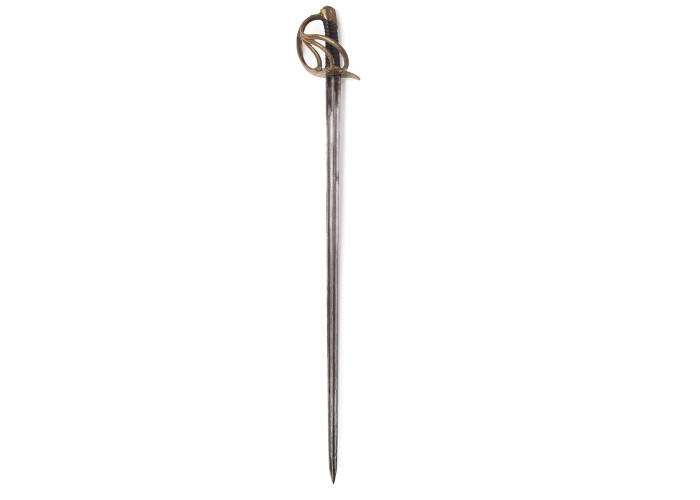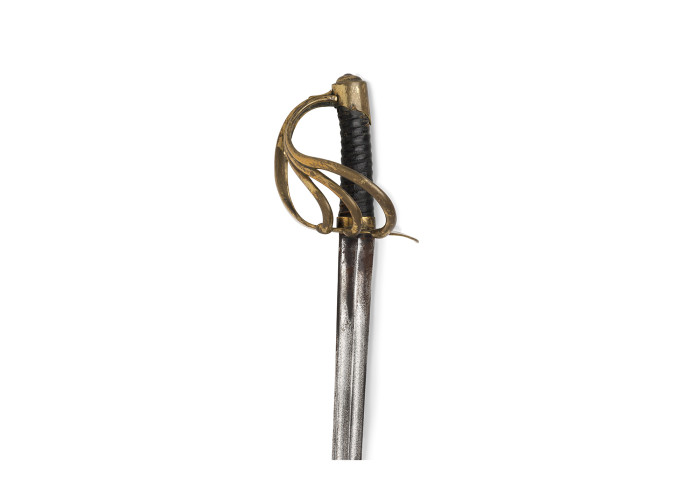French Cavalry Sabre
This is a sabre carried by ordinary soldiers (other ranks) in the French heavy cavalry, especially the cuirassiers or armoured cavalry.
These were shock troops, big soldiers (normally at least 1.70m tall) mounted on large horses. They relied on their momentum to break up enemy formations so that the sabre could be used in a thrusting motion to kill or wound enemy soldiers. A wound caused by the thrust of a sword was more likely to be fatal than one from a slash.
This model of sword was introduced in the Revolutionary Year AN IX (1800–1801) and was an attempt to standardise the wide variety of cavalry swords adopted since the French Revolution in 1789.
The hilt or handle is made from cast brass with four bars coming out of the guard to protect the soldier’s hand. The handgrip is wooden, covered in leather and bound with brass wire to stop it slipping if the soldier’s hand was covered in sweat or blood.
The straight blade was intended to be used in a stabbing motion. It was 98cm long, letting a soldier reach almost to the ground from horseback. It had two grooves which ran along both sides of the blade. Some people think that these grooves, called ‘fullers’ were intended to allow the blood from a wound to flow easily down the blade. Their real purpose was to make the sword lighter without losing its strength.
The scabbard is made from steel sheet with a wooden lining. The bottom ends with a lyre shaped plate or ‘chape’ which dragged on the ground. It was worn on a white leather belt around the waist.
The steel helmets, breast and back plates of the cuirassiers made them formidable enemies who were hard to kill. Lord Edward Somerset, commanding the Household Brigade, recalled that at Waterloo ‘the blows on the cuirasses sounded like braziers at work’. Captain Gronow of the 1st Regiment of Foot Guards said the sound of bullets bouncing off them ‘was like a violent hailstorm beating upon panes of glass’.
The ANIX was a very successful sword that was still being used as late as 1870.
-
Curatorial info
- Originating Museum: Queen's Own Hussars Regimental Museum
- Production Date: c. 1800-01
- Material: Steel, brass
- Size: 120cm
-
Use this image
You can download and use the high resolution image under a Creative Commons licence, for all non-commercial purposes, provided you attribute the copyright holder.
- Rights Holder: Copyright Queen's Own Hussars Museum. Photography Relic Imaging Ltd.
- License Type: Creative Commons
Find it here
This object is in the collection of Queen’s Own Hussars Regimental Museum









